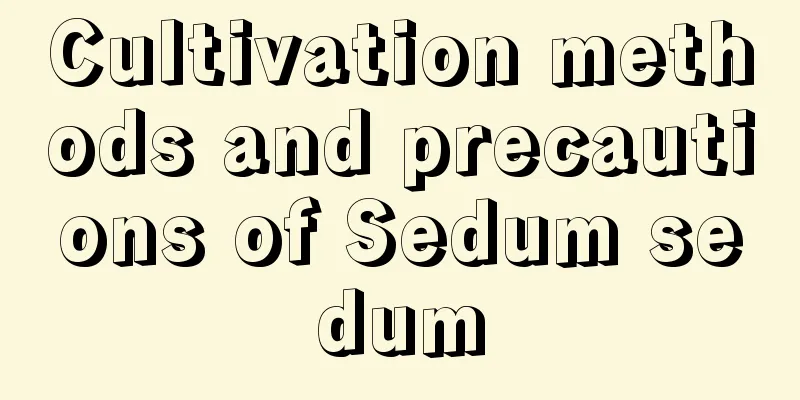Cultivation methods and precautions of Sedum sedum

1. Maintenance methods1. Soil: It requires the soil to have good drainage and air permeability. Flower lovers can prepare the soil by mixing garden soil + leaf mold + coarse sand. Such soil also has sufficient nutrients. 2. Watering: Try to provide it with a moist growing environment. You can water it more appropriately without causing water accumulation. In summer, it is best to water it in the morning and evening. 3. Fertilization: During its growth period, you can apply liquid fertilizer to it, preferably well-rotted one, and then dilute it with clean water for watering. It is enough to apply it once every half a month, and the concentration should not be too high. 4. Light: If the weather is good, you can maintain it outdoors in a location with good light conditions. The sun is quite strong in the summer, so you can provide proper shade to prevent it from being wilted by excessive exposure. 2. Breeding techniques1. Pruning: When pruning Sedum sedum, cut off the diseased or wilted branches. In fact, you can prune at any time during maintenance. If you find messy branches, you can cut them off. 2. Reproduction: The reproduction of Sedum sedum is usually carried out by stem cuttings and leaf cuttings. The more suitable time is from September to May of the following year. This period is the stage when it grows more vigorously, and the survival rate of reproduction is relatively high. The method is very simple. Just cut the branches for cuttings, prepare the sand bed and insert them. 3. Problem diagnosis and treatment1. Gray mold: This is a disease that is relatively harmful to it. It must be prevented and controlled in time when it is discovered in the early stage. You can use carbendazim to spray it. The effect will be better if you persist in using the medicine. 2. Pests: The most common pest is whitefly. It is best to ventilate frequently to effectively avoid pest invasion. As soon as they are discovered, they should be sprayed with pesticides to kill them. IV. Other issues1. Can it be grown indoors? Sedum sedum is not very suitable for indoor cultivation because it has high requirements for light for growth. The sunlight entering through the glass will block most of the ultraviolet rays, and it is not as strong as growing under direct exposure. 2. Is it poisonous? Sedum sedum is not toxic at all. It is a very cute succulent plant. It not only has a unique shape, but also has good meaning. You can cultivate it with confidence. |
<<: Cultivation methods and precautions of red nan
>>: Breeding methods and precautions for hanging flower firebird
Recommend
The reasons and solutions for the shriveled and soft leaves of Tiger Pilan
Tiger Pira , an ornamental and easy-to-care-for i...
How to deal with peony after flowering
Peony post-flowering treatment 1. Pruning After t...
How to change the soil of Golden Tiger Cactus and what is the time and method of changing the soil
When to change the soil of Golden Tiger Cactus It...
Soybean growing environment and local conditions
Soybean growth environment and conditions Soybean...
What to do if the leaves of the euphorbia pulcherrima wither and droop
1. Replenish water Reason: The Chinese peonies ne...
Can rose branches survive by transplanting?
1. Can it be inserted alive? The branches of rose...
The difference between lisianthus and platycodon
1. Difference of blades The leaves of lisianthus ...
How to grow potted hibiscus
How to grow potted hibiscus soil Hibiscus does no...
When is the best time to plant peonies?
Peony has been regarded as a symbol of love since...
How to grow pomegranate flowers
Pomegranate flower growing conditions Pomegranate...
Can asparagus fern be repotted in September? Can asparagus fern be divided in September?
1. Can asparagus fern be repotted in September? Y...
The difference between red tassel and powder puff flower
1. Different appearance The name of the red tasse...
How to manage blueberry trees in winter?
Blueberry is a very popular fruit in the market a...
What to do if the roots of Frost Morning turn black
1. Caused by excessive watering Frost Morning is ...
What method can be used to propagate Sansevieria? Will it survive quickly?
1. Breeding Methods 1. Cuttings: Tiger Piran can ...









